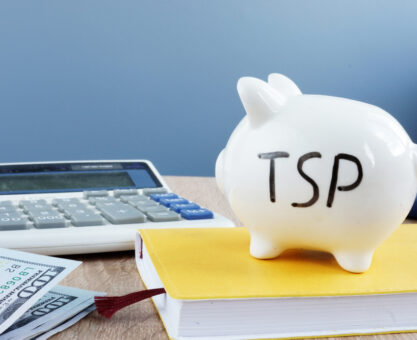In 2012, the Thrift Savings Plan (TSP) began offering federal employees another type of retirement savings strategy: the Roth TSP. Yet, more than a decade later, only a small percentage of TSP participants are taking advantage of it.
Let’s Start With How The Roth TSP Works
Contributions to your Roth TSP are made with after-tax earnings. This means you’re paying taxes on your contributions at your current income tax rate and you won’t pay taxes in retirement when you withdraw your contributions and any qualified earnings.
Earnings are considered qualified when two Internal Revenue Code (IRC) requirements are met: five (5) years have passed since January 1 of the calendar year when you made your first Roth TSP contribution and you’re at least age 59½. If these conditions are not met, only the earnings portion of your Roth TSP withdrawal is subject to income taxes.
The Roth TSP Is A Separate Balance Within Your TSP Account
A common misconception is that you need to set up a separate account for a Roth TSP. Not true. When you participate in a Traditional TSP and a Roth TSP, you’ll have two separate balances within one TSP account. When you take distributions, withdrawals are made proportionally unless you specify otherwise.
Your Roth TSP Contributions Get The Agency Match
Your Roth TSP contributions will get the agency match however the matching portion is deposited into your traditional TSP balance. The reason is simple: income taxes. Since the agency match on your Roth TSP is not taxed, it’s added to tax-deferred balance of your Traditional TSP to be taxed upon withdrawal in retirement.
”Considering the Trump-era tax cuts are set to expire on December 31, 2025, everyone will be in a higher bracket when tax rates rise in 2026.”
Distributions From The Roth TSP Are Tax Free In Retirement
Roth TSP distributions are tax free in retirement because your contributions are deducted from after-tax earnings. This means you’re paying taxes on contributions based on your current income tax rate and your distributions aren’t subject to a higher rate at some point in the future. Considering the Trump-era tax cuts are set to expire on December 31, 2025, everyone will be in a higher bracket when tax rates rise in 2026.
The Roth TSP Is No Longer Subject To RMDs
In addition to tax-free distributions in retirement, as of January 1, 2024 the Roth TSP is no longer subject to Required Minimum Distributions (RMDs). This makes life easier for your beneficiary if you pass away unexpectedly because they’ll only have to worry about taxes and RMDs on the tax-deferred portion of your TSP balance.
To develop the best TSP strategy for your needs, consider working with an FRC® trained advisor.


























